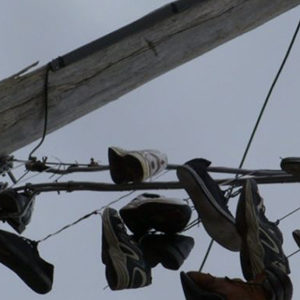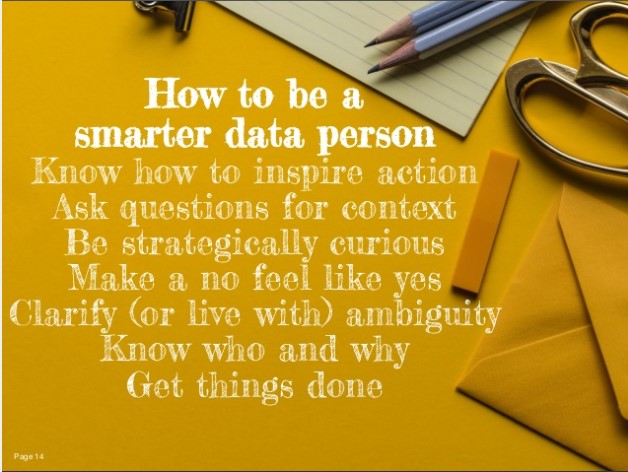
Tony Savides was recently honoured as one of the top 25 Leaders in Analytics by the Institute of Analytics Professionals
In this podcast Tony and I talk about:
- waste in most analytics processes
- why visualisation isn’t necessarily adding value
- choosing the right tools for the job.
There’s much more.
Here’s the transcript.
Cindy Tonkin: 00:07 Hi there, this is Cindy Tonkin. I’m the consultant’s consultant. I work with data science teams, helping them work even smarter, faster and nicer. If you’re brilliant and you want to be even better. This is the podcast for you.
Cindy Tonkin: 00:24 Thank you Tony Savides for being on my podcast today.
Tony Savides: 00:28 Thank you. Very, very honoured to be on your podcast.
Cindy Tonkin: 00:31 You were recently honoured by IAPA as well. Tell me, did you have to come up to Sydney for the ceremony or did you just get the award in absentia?

IAPA Analytics Leader
Tony Savides: 00:43 I was in Sydney and used that as a good excuse to get a break and come out with the wife, and away from the kids as well.
Cindy Tonkin: 00:50 Oh, fabulous. And how rigorous is the IAPA application? You have to apply, right? What kind of questions do they ask?
Tony Savides: 01:01 They focus on strategy, mindset, how you apply yourself to analytics, and specific case studies. There’s an emphasis on mentorship, around how do you grow teams, how do you grow and develop their capabilities and how have you developed individuals within your organisation, and also how you tackle coordinating and driving analytics within your organisation or other organisations as a whole as well.
Cindy Tonkin: 01:26 Okay. So it’s a quite extensive process to go through. You dont just throw your hat in the ring. You have to actually spend a couple of hours doing it.
Tony Savides: 01:36 Yes. There’s a fair amount of content you got to put down and provide them.
Cindy Tonkin: 01:41 Well, congratulations for making it through and being honoured.
Tony Savides: 01:46 Thank you.
Cindy Tonkin : 01:48 What I do in podcast here is just ask a series of questions, but I know you had a question you thought would be interesting to talk about, which was about wastage and analytics. Do you want to tell me about what your thoughts were on that.

Wasting Away
Tony Savides: 02:01 Yes. That’s quite a passionate thing that I talk about and have come to discover in analytics. I do feel that there’s a high degree of waste. If you look at BI projects and you look at the typical success rates on big data BI and technology projects, the success rate is pretty low. The stats out there range to about 70% BI or essentially technology products land up in failure. There are reasons why. But even when they are a success, if you think about the entire analytics process, there’s a lot of what I call wastage.
Analytics and applying analytics is still new and nascent relative to other industries that are very well established like manufacturing and finance. In those domains they speak about lean six sigma. They speak about constraint analysis, and applying that theory and those principles.
Tony Savides: 03:01 I find that in analytical projects, sometimes the process starts off with What data do we have? What can we extract? Okay great, now what can we analyse? Then comes, what can we do with this? And that’s the challenge right there.
If you think about it, it’s like manufacturing. You have a whole bunch of material essentially you’re taking in and then you store that and you process that. Fundamentally you get these products and a lot of by-products. Again, ultimately it’s the product you sell at the end that actually adds the value. I’ll use that as an example.
ultimately, it’s the product you sell at the end that actually adds the value
Tony Savides: 03:44 If you think about analytics, what do you have? You have sources of data and these are your transactional systems. This can be IOT, all the systems that fundamentally will generate that information. And as these multiple sources of information generate this information, we put it into the silo. We consolidate this in a data warehouse.
There is a massive amount of energy and cost that organisations put into building up these monolithic, data lakes, databases, data warehouses. The premise by which they sell it to the clients is, think of all the value you could extract from this data. But the amount of work that goes into it, and the amount of data that finally goes through that funnel and actually materializes into value, it’s a fraction of that data.

Identifying Value
Tony Savides: 04:32 Let’s keep going through the process. After you’ve consolidated and put this data into a silo, now we want to extract it. We want to get this data out. We extract that and provide this in the form of visualization tool and self service analytics. We use click view, tableau, power bi, whatever it is, and we see the results. We start seeing the data.
Now the interesting thing is that those tools are not analytical tools. They are visualization extraction tools. It’s the human being that still analyses that. Or we take that raw information and extract it and then pass it onto some form of sophisticated algorithms which are applying AI, ML whatever it is that we are doing to extract the insights that we need.
So once you’ve extracted that information, there is still this next step in the process which fundamentally is around analysis. And I separate out those two worlds again, because a lot of a lot of money goes into visualization, which doesn’t necessarily always translate into value. Because out of those thousand reports or dashboards, which ones are the ones that actually are meaningful and really drive value.
Cindy Tonkin: 05:41 Essentially we’re not starting from a client brief saying “I want to know more about this”. We’re starting from, “this is the data we’ve got, go play with it”.
Tony Savides: 05:53 Spot on.
Cindy Tonkin: 05:53 It’s in the hands of people who don’t know what to do with data.
Tony Savides: 05:58 Exactly and there’s the point. There’s the principle you just touched on now. After you’ve analysed it, it goes off to someone who’s going to make use of it. I call that the beneficiation phase. When you take that insight and you fundamentally get a return on it. You’re going to turn it into some sort of economic value. That’s when it becomes real. That’s when you get value from that analytical process.
When you take that insight….. to turn it into some sort of economic value. That’s when it becomes real.
So the data in the data warehouse doesn’t actually add value until it gets to the end of the street. If you think about the way most processes and flows work, they start at the source, we consolidate, we extract, we then analyse, and then we look to see how we can get benefits from it. But if you think of that inside cost funnel, where’s most of the cost sitting? It’s sitting from the beginning part of their value chain and it diminishes exponentially going into the end of their value chain. Where does the value sit? It sits at the end of the value chain and diminishes exponentially going backwards. So think of that paradigm.

Talking Strategy
I always say work backwards. Sit with the clients, sit with your team, and ask the questions.
Tony Savides: 07:01 I always say work backwards. Sit with the clients, sit with your team, and ask the questions. What are your leaders? What can you do? And before you actually ask that, what is your strategy and what are your objectives?
So let’s say, we are looking to improve our customer retention. Our burning platform is churn and we want to retain our customers. What can we do to improve this? Well, we can try and manage customers that are essentially likely to churn. We can help you with that. We can give you the list of customers that have a high propensity to churn. And now you work backwards.
In order to do that I’m building a predictive model that’s going to predict whether someone’s likely to churn based on behaviour. I did extract the following sets of data, for the data warehouse, and we always get to the data warehouse and it turns out that we thought we were going to get isn’t actually that accurate.
But hey, out of the entire data strategy, if we know that this is the most important thing, let’s actually focus on getting that data right. Let’s focus on seeing what data we can get from that and get that right. Prioritize that because we know that that’s going to go straight through the chain and deliver value.
Tony Savides: 08:29 You keep going through that process. So what else can you do? Could we think about, of customers that are likely to churn, is it a product problem or was it a price problem? If it’s a price problem, maybe we can help with price elasticity. Maybe we can apply price elasticity techniques. And what do we need for that?
Cindy Tonkin: 08:49 Working from the problem rather than working from the data.
organisations typically struggle with building meaningful capabilities
Tony Savides: 08:52 Spot on, and oftentimes that doesn’t always happen in organisations. They want to build a capability. And that’s how I also find that organisations typically struggle with building meaningful capabilities internally, and making a success out of it. Because they start with either the data, let’s see what we can do with the data. Or, let’s build a capability and figure out how this capability can add value.
Cindy Tonkin: 09:19 Rather than starting with what is the business need and let’s help, let’s help them make those decisions better.

Choosing Tools
A tool is going to add zero value if you’re not finding the right tool for the right job
Tony Savides: 09:25 And let’s be honest, a lot of these analytical techniques, have been democratized and I just see them as tools in a box. That capability is just a tool in a box. A tool is going to add zero value if you’re not finding the right tool for the right job and you’re not actually doing the right job to start with.
Cindy Tonkin: 09:45 And if indeed you are not helping the customer solve a problem. They go, I could’ve got that out of Excel. And then you basically ruined it for every other data analyst who’s ever going to come in and try and solve the problem.
Tony Savides: 10:02 Exactly. I’m glad you mentioned Excel because then we talk about technology. Do we use Excel? Do we use Power BI, do we use ROI, do I use SAS again and now we speak about the technologies. And again whether you use ROI or SAS, that doesn’t make a difference. The technology is going to make the process efficient and or sustainable.
We are looking to automate that process. I could actually get a team to run and crunch those numbers on their propensity list of people that are likely to churn. I could provide conjoint analysis to have a good sense as to what other pain points are the products that are more meaningful for one customer segment versus another customer segment. I can do all this. But if I have a team that has to do this and crunch these numbers, it becomes costly. Sustainability then becomes an issue.
So technology is about, well how can we streamline that? How can we automate that? And once you automate it, that just goes into a system is automated. It’s a process that runs and use the team to then crack the next atom, solve and deliver value somewhere else. And then you’re just looking at technology as something that fulfils it and drives sustainability and efficiency for the process.

Doing It Better
Cindy Tonkin: 11:21 Are there are some industries where they’re doing better, lower wastage and some industries where they’re higher the wastage.
Tony Savides: 11:27 That’s a very good question. Yes your financial sector, your retail, manufacturing, mining. Each one of your sectors have a different band and focus and have applied analytics in different ways or needs. When it comes to larger, big institutionalized organisations, financial services being in the bigger ones it’s like a massive anthill.
There are a million ants in the ant hill. Each one’s doing a small job in this big, big, big, big, big mound. Fundamentally it works. But the amount of efficiency and focus on capabilities, focus on data and strategic alignment that runs across the group becomes really difficult. It’s not difficult cause they’re mismanaging it. It’s just the sheer size of it and the dynamics of a big organisation like that. So it’s not about the industry or the organisation, it’s just difficult to manager the nature of the process.
the quality of the data actually depends a lot on the quality and the propensities of the leader
Cindy Tonkin: 12:38 It seems to me it also comes down to the strength of the leaders who are setting the strategies and who are approving or disapproving particular initiatives. Because if it was you as a leader and someone said, I’m going to look at all the data and then I’m just going to make a tableau, you’d be like, no, we need to find out what the problem is. The other leaders were like, great, go! So it’s kind of like the quality of the data actually depends a lot on the quality and the propensities of the leader who’s leading the team.
Tony Savides: 13:13 Yes. That’s spot on. RMIT actually has been doing research in analytical readiness and analytical maturity within an organisation. A lot of the research shows that if you look at it from the critical parts of your strategic alliance, analytical capability, data management capability, and then just organisational governance structure enablements. One of the key things that actually starts coming out and sighted as kind of a dominant factor actually starts off with strategic alignment and leadership alignment.
Cindy Tonkin: 13:52 I can understand that, because if you don’t have strategic alignment we’re all asking for different questions and we’re not solving the most important ones.
Tony Savides: 13:59 Spot on. Exactly. Yeah. And you don’t have the CTO focusing on delivering a technology that’s cost effective, without paying respect and understanding that it’s not about that. But understanding it starts off with, We are trying to reduce churn. We have a burning platform. We have to retain our customers. If we don’t do this, we fundamentally are going to fail.
Cindy Tonkin: 14:20 Yes. We wont to have anything to fund anybody to do any research.
Focus and alignment
Tony Savides: 14:24 Spot on. Then the marketing director or CMO who then understands that their focus and attention is around positioning the brand better will essentially be focusing more on existing customers and positioning existing customers than new customers. You have the retention team that is focusing on that. You have the analytics team understanding that are gearing and understanding the delivery team to provide analytics that support them do that job better and retain customers better. Coming up with those things from the toolbox.
Tony Savides: 14:56 Now the technology executive who is focusing on what is the technology and the platforms and you have the CIO that’s focusing on, well if not just creating this mound of data. It’s actually the quality of that edit that matters. So let’s make sure we get that right.
Cindy Tonkin: 15:18 Where do you stand on the CMO, CTO, CIO? Should there be a Chief Analytics Officer? What are your thoughts around that?
Tony Savides: 15:26 I don’t really have a particular view on that. I’ve seen a couple of articles talk about the fact that a CMO has become less relevant, and has become more of an analytics capability and mindset. At the end of the day, the title is irrelevant. It’s the purpose and objective. What is someone doing right?
marketing is a great, great place to actually start applying advanced analytics … it really is the critical seat that can make or break an organisation.
Marketing’s about awareness. It’s about positioning, and marketing is a great, great place to actually start applying advanced analytics. If you think about marketing span and the lever marketing has in really product focused, customer focused businesses, it really is the critical seat that can make or break an organisation. Having a CMO with a really strong analytics background, really makes a massive difference.
Tony Savides: 16:16 A friend of mine, Jose Henrique, spent a lot of time in a marketing position. His analytical understanding and capability is incredibly strong. He was able to do fundamental improvements and fundamentally shift organisations and improve them, because he understood that balance. It’s not just about marketing it’s smart marketing.
Cindy Tonkin: 16:42 Exactly. Using efficiency. Which goes back to the wastage thing that we started with. Essentially get 20% more done by just making more sense, in terms of the things you look for and the things you ask for. Yeah.
So how did you get into analytics? What’s your career path to get to here?

Tony’s Background
Tony Savides: 17:04 My background is electrical engineering. After my postgraduate I decided to go into a really strong Engineering career and worked at a break through research and development company and had lots of fun. In the three to four years I was there, it was just an incredible experience.
But through that course I came to realize that there was a side of me that, as much as I enjoy the engineering and analytics, I also enjoyed business and understanding how to apply that to a real business context. So I started to broaden my skill sets, started an MBA. I was fortunate enough to join Business Science Corporation as a consultant, which focuses on analytics and technology.
I progressed my career to becoming director. I managed to start and be a shareholder of Revenue Science, and now the journey’s been fantastic. I absolutely love what I do. There’s high degree of enjoyment and satisfaction. Where you can apply really smart analytics and see real value being delivered. And, within a business that can not only add value to the business from a bottom line but can apply analytics to things like safety and improving health overall or quality of life for individuals – then that’s very meaningful. That’s a meaningful space to work in.
apply analytics to things like safety and improving health overall or quality of life for individuals – then that’s very meaningful. That’s a meaningful space to work in
Cindy Tonkin: 18:35 Yes, totally. I was in Singapore last weekend. I visited a design museum which excited me no end, because it was essentially data applied to a whole lot of interesting things. Like, for people who’ve got a limp, how do we make a prosthetic for the limb. When we give them a support for a twisted knee, how do we design it so that it will take haptic feedback from the knee and support you properly for the period that you are healing your knee.
There’s a motorbike that will take haptic feedback from the rider and adjust how it rides. It’s a driverless motorbike but you get to actually ride on top. Just taking feedback, not just from the riders body, but also from the riders face. This is all data. This is just data and gone crazy in a beautiful way. It’s just exciting and there’s so much data we can get.
And as you say, if we stop wasting half of our time and half of our world, reworking stuff that we should never have done in the first place because it didn’t answer any business important questions, we’ll have so much more information to play with and time to play with it because we’re not wasting our lives.

Questions: the Magnificent So What?
Tony Savides: 19:53 It’s quite interesting. You touch on a point there which I always talk about, in both applying analytics and also just from managing your daily routine in your life. I talk about the demand being virtually infinite, and your time or analytical resources are finite.
Let me frame that in analytics projects space. Let’s say we walked into an organisation, and we just wanted to start coming up with creative, innovative value adding ideas, that you can apply analytics to within organisation. Both of us sat down and wrote down ideas for pairing up in 10 to 15 minutes. I assure you we will come up with more work in those 15 minutes than we can to deliver in 2 years plus. With a big team to deliver on it. So the demand is massive.
Tony Savides: 21:13 There’s so many analytical things that can actually happen and you can actually do. But your team size, the capability, their information, everything you have in your resources is finite. So if you are not actually focusing on being very specific – going back to the focus on the strategic objective where you can add value – it becomes a very high degree of wastage.
[my team will] do something really magnificent. Then I’ll get them to borderline hate me, because I asked the question, “So what?”.
A lot of times I actually frustrate some of the team members that I manage. Once they actually do something, maybe a pet project, they might do it over the weekend or they’re working on something to deliver to a client or internally and then they’ll deliver it. They’ll do something really magnificent. Then I’ll get them to borderline hate me, because I asked the question, so what?
Tony Savides: 21:55 Missing all the work that they doing, I say “So what?” They get deflated asking “What do you mean so what? Look it’s magnificent. Look at these charts. We’re plotting the movements of people throughout the region. Look how demand shifts over time”. That’s great. Really, that’s fantastic. But so what? Really, the ‘So what?’ question also helps drive thinking. It should actually be a cultural thing to ask about every report.
I hate reports because out of hundreds of reports, only about 20 reports where things that were actually looked at, in fact I have a case study where it’s exactly that. Imagine taking those 20 reports and using the team and resources to actually focus in driving more value in that or creating intelligence around those critical things that are important to the business. And again, that brings it back to the wastage question.
the ‘So what?’ question also helps drive thinking. It should actually be a cultural thing to ask about every report

Finding better data people
Cindy Tonkin: 23:00 Exactly. So you’ve mentioned your team can be frustrated with you at times. How do you get a team together. How do you recruit? What do you look for? What makes a better data person?
Tony Savides: 23:15 OK I talk about the 4Cs. Capability is key. I don’t place much important importance in capability if someone is smart enough or they can teach themselves. And let’s be honest, data science is such a fast growing space that it is actually less about what the person currently knows and rather their ability to actually learn new and nascent things that are emerging.
Cindy Tonkin: 23:43 So you recruit on potential rather than actual.
Tony Savides: 23:48 Yes. So it’s a capability to learn. Capability to understand the technical space, but also grow and learn and adapt. So that’s capability. That’s your foundation. The next one is commercial thinking. Again, it doesn’t always have to be there, but it has to be a degree of commercial thinking.
That goes back to the return on insights. It goes back to understanding “If I do this piece of analytics, how will it add value? Am I going to ensure our customer remains? Am I going to ensure that someone is less likely to have a fatality? Is it going to ensure that someone is going to have a better joint and knee”, that haptic feedback to you were the talking about around the knee joint.
So that’s commercial thinking. And the “So what?” question always helps in driving that thinking. The third one is compassion.
Cindy Tonkin: 24:43 Interesting. Compassion in what sense?
Tony Savides: 24:46 In multiple senses. It’s compassion to a client and understanding that they have a particular need and purpose and you actually supporting them in delivering what their objectives are. It’s going beyond the client and understanding that the mind is a client. What is it that you’re doing to make the customer’s life better and improve their lives in whatever you’re doing.
It’s going beyond the client and understanding … what it is you are doing to make the customer’s life better

Compassion and creativity
It’s compassion in working collaboratively with someone else and working in a team and working together in a harmonious way. Compassion seems to be the grounding principle there that enables that. And then the last one I said there was four cs. The last one is creativity. A high degree of creativity.
Again, you’ve got this toolbox, or a set of brushes and paints, and sometimes to make that masterpiece or to solve and build something magnificent, there has to be a degree of creativity to bring that all together. Especially when it comes to data.
Tony Savides: 25:57 I don’t think there’s been an organisation where the data’s actually been as clean and integrous as the people work in organisational believes. So you’re always using data that is..
Cindy Tonkin: 26:11 That’s slightly muddy,
Tony Savides: 26:12 Just slightly muddy, right. Creativity allows someone to say, Well with the trend of the data is there bias? And what sort of noise do we have in that bias? And how could we basically reframe the data? How can we reposition it? Maybe a ratio is more accurate. Maybe a ratio is the wrong thing to use.
And this is the degree of creativity, not only the toolboxes, but also how and what data you can use and where you can source information from. There are hundreds of use cases and business cases, around how creativity in where you can source information from that could actually get you the insight you need.
In one case study I’ve come across, they were looking for fraud where it was very difficult to actually find the information of the individual and ensuring that the information that the individual is putting in was correct. But then looked at how they were typing. The degree pace at which they were typing to their name. I mean, hello your name, you’re not going to type it slowly.
Cindy Tonkin: 27:09 Checking the spelling because it’s not your name. Yes, exactly.
Tony Savides: 27:12 So that’s creativity right? You have to be creative to basically see that perspective and say, well actually here is another piece of information source that we can actually use and yield to really have a high degree of sensitivity in determining whether it’s fraudulent activity.
Cindy Tonkin: 27:32 Yeah. Because ultimately they say the expert is someone who can do all the right things from all the wrong places. So if your data was a little dirty and you can still find stuff or you can find another way, then that’s what makes you an expert as a data person. Its “here is the answer I want. How do I find enough evidence to give me that?”
Yeah, it’s interesting. So your 4 Cs. I like the 4 Cs. Talk to me about professional development for yourself. Obviously you’re a strong learner, you’re out there all the time. What do you do to keep up?

Professional Development
Tony Savides: 28:05 I tend to look for Business cases. I look for articles and business cases. You can get a lot from LinkedIn and Ted talks and a lot of contents are already out there. I don’t see that much value in conferences, but if you look at the right podcasts, you find good content. And also specifically articles in business cases.
There are two reasons why business cases are great. One is, it’s not a business case if it didn’t prove value. It wasn’t academic. It wasn’t something hypothetical or interesting as a theory. Fundamentally it is a business case because it was the tangible value that it delivered. And then it’s also telling in the process they followed.
So it’s not just about applying analytics again, that’s just the tool in the toolbox. If they tell you the story in a business case, on the softer side of things, how did they get buy in? How did they change the culture hub? Did they fundamentally get alignment? How did they deliver? How did they overcome technological issues to actually achieve what they needed to do. So it’s got this massive rich, rich, rich wealth of information inside it.
Cindy Tonkin: 29:18 Is there a particular site or a particular organisation that publishes business cases you found particularly useful?
Tony Savides: 29:25 So I find Medium, that’s an app, is pretty smart. If you are really targeted at what you’re looking for it specifically learns of the articles you like, and it has a broad range of them. So I’ve got a subscription that, and I found a wonderful one that I’ve actually posted on LinkedIn to Netflix. Where Netflix was using analytics around the way they use artwork.
Cindy Tonkin: 29:49 Yes. I’ve read that article actually. Yes.
Tony Savides: 29:58 I found it on Medium. If you read that article, and go to the LinkedIn page to read it, it’s so detailed in the sense that they talk about the value and how they’ve proven factors on each iteration of their process. But they also spoke about the technological challenges they had. It’s customised per person, and it’s so specific and smart, and they had to overcome many challenges.
Cindy Tonkin: 30:29 Splendid. It really is splendid what people are doing with data. How could you not be excited by this.
Tony Savides: 30:39 Absolutely. I love my job and I love what I do.

Building analytics capability: from scratch
Cindy Tonkin: 30:43 Yes. So to go more theoretical, if you are going to build an analytics process or analytics capability from scratch in an organisation right now, how would you start?
Tony Savides: 30:53 So we spoke about leadership and alignment in the leadership space. You really need to start off at that level. There’s two possible: one is how you would build it as an organisation. The other one is how you build it as a service practice. Let’s talk about organisation. Strategic alignment is the critical first part.
The second part is again, based on what you deliver, the funding and resources that you will get to develop that capability. Because it does come down to budget and funding. It can come down to the business case and what you deliver. So first part is get aligned. Understand what is the strategic objectives, what is the alignment between the organisation and what do you focus on.
Tony Savides: 31:40 The next one is to find quick wins. Find those quick win projects. Sometimes areas within the business can get bit too ambitious on projects. They look to solve a monolithic project, and sometimes over complicate something. You don’t have to apply such a high degree of analytics to deliver the value.
So go through the quick wins. Be very careful not to make it too much of a big project. Then go through multiple ones that have multiple values and to different parts of the organisation. That happens, the awareness, the collaboration and alignment actually happens. And then it’s about hiring and the right teams and building them up.
Cindy Tonkin: 32:23 Going back to your four 4 Cs, the teams would have those 4 Cs.
Tony Savides: 32:26 Yes Exactly. And I find that mentorship in analytical teams is critical and key. Because capability will always be there. Commercial thinking needs to be passed on by conversation and mentorship and working with teams and always talking about that business case. Asking what is that return on insights going to be? That’s through conversation.

Mentoring
So mentorship in building the capabilities and the teams is another critical part. Sharing Information. A lot of times projects happen in isolation. I mean it happens even with our organisation where some teams are doing magnificent work, like really groundbreaking work, but if they’re not sharing that knowledge, someone’s going to reinvent it, rebuild it or not take the lessons learned and bank them.
Tony Savides: 33:14 So create this, like, mini Ted talk and encourage people within the organisation to share what they’ve learned, to discuss how it added value and also then helps the analytical teams develop more social skills.
Cindy Tonkin: 33:28 Exactly. And it’s also a kind of a form of a PIR – post implementation review – which most teams do not do, but everybody says we should. So at least by socializing the results, you end up with a PIR if you get a tick, they can listen. But yeah, the social skills, well, yeah,
Tony Savides: 33:46 Spot on. I love the fact you brought up the PIR because that’s very important. Before you start a project, we spoke about ensuring that the value isn’t driving the value. Right? And putting a business case forward. But what happens if the business case doesn’t get delivered? What happens if we don’t actually see the value come out on the other side?
You’re only going to know that if after you’ve actually implemented that project, you keep monitoring. You say, well, we can see churn improve, right? Did we see customers retained? Do we see that NPS score has improved and is better? And keep track of that. And if it didn’t actually, that’s more magnificent than if it did. Because if it didn’t, you know, where you are failing.
Cindy Tonkin: 34:28 Exactly. Yeah. And if you go back to the wastage, if you can tie that back to the wastage. Your PIR is going to show you there was wastage. How do we prevent that happening again? But you know, you and I are talking to the converted here.

Keeping Track
One of my previous lives, I was a productivity improvement consultant, and that’s pretty much all we did. What’s the information and whatever scanty information you have, what’s the information telling you about what you did yesterday, that means you shouldn’t do that again?
As a customer, I’m constantly frustrated because I’ll call and say, hey, I’m just letting you know that this isn’t working on your website or in your customer process. And they’ll go, oh, sorry. Sometimes. But they never say, okay, let’s put a system in place and make sure that never happens again. Because they don’t get it. I ask “isn’t the world moving forward yet?”.
Basically the customer didn’t have the experience they should have had in terms of the data they wanted to get, or the decision they wanted to make. How do we make sure we don’t embark on that kind of process again and repeat our error?
Tony Savides: 35:37 It goes back to where I started off saying large organisations typically don’t always get that alignment. It’s not because of the organisation, it’s just the nature of that system That anthill. Where it’s just difficult for that person at the call centre to actually have the ability to log into the debate, and actually drive change. Because they’re not enabled to do so. And they are just managing that one part of the entire process.
Cindy Tonkin: 36:07 So it worries me that, for example Optus I currently got my phone with, I’m talking to a Bot. A Bot is not going to log that problem. Is the Bot going to notice? I don’t think so. They’ll have different data, but they won’t get live customer feedback. Oh, sorry, I’m going to have to sit in a feedback session and do some market research to find out something that my customer will willingly tell me if I just let them, and give them the forum.

What About Bots?
Tony Savides: 36:39 Agreed. Okay. So, I’ve got two minds about Bots. One is the downside of a game, what you say. But on the other hand, it does provide the platform for improvement. The fact that you’re talking, and as that starts to improve, as that gets better and the next layer goes on that says, Can the Bots, or can you have a system to start determining repeated issues? Can it automatically feed back into itself? Can it get smarter and better? And maybe in the digital space does allow you actually to have that information.
Cindy Tonkin: 37:14 The same way Netflix learns what pictures I want, to make me want to watch a show. The Bots should be doing that same thing with telephones, We’ll find out.
Tony Savides: 37:24 I think chat Bots and virtual agents, will get better at the time.
Cindy Tonkin: 37:30 They have to. And they are much better now than they were. We’re seeing improvement daily. Every time I interact with a Bot or a chat Bot or whatever, I’m like, oh, this is better than it was, three years ago, five years ago, 10 years
Tony Savides: 37:44 I think it’s the right platform. I think it’s just got to mature as a technology and a platform. It’s just the layers that are going to be stacked on top of it that will make it better. But yeah, I’m pretty hopeful that that’s going to actually make things more efficient and hopefully reduce call waiting times.
Cindy Tonkin: 37:58 Yes. Wouldn’t that be good? That’d be good. I have two random questions. One I wanted to ask you about. Analytics and Agile.

Analytics and Agile
Tony Savides: 38:25 Yes. The Agile debate or discussion is a big one.
Cindy Tonkin: 38:31 I know. We could have a whole podcast on that. Maybe I will.
Tony Savides: 38:36 Because we are an analytics and technology company, we apply a lot of Agile within the technology we build.
Cindy Tonkin: 38:44 There is a lot about Agile that is good. The constant, the performance implementation reviews, all those kinds of things are built into it. How you do it, I think gets tricky.
Tony Savides: 39:00 It is. The original intent of Agile was actually to reduce wastage. As times going past Agile is more around just being dynamic rather than being more efficient. There’s such a subtlety between those two differences. Dynamic means I’m adaptable, I’ll change. Efficient means I’m still delivering a particular objective. I still fundamentally have a clear view as to what I’m going to deliver and I have to deliver it.
That’s really the sense of where Agile can get wrong. So if you’re just dynamic, changing, adapting, but you don’t have a clear view that this has to be delivered at a particular point in time, and it has to solve this particular problem, and it has to add value, it can get lost. So Agile is wonderful for the analytic space. And arguably far more efficient in doing so. But you have to remind the teams constantly.
Tony Savides: 40:01 We often speak about something called the definition of victory. It talks about What is it that you are going to fundamentally do? What is it that you will deliver? But, of the thing you deliver, how will it add value? And you want that to be front of mind every single time you’re going through every iteration. Because you can lose that.
You can forget what the objective is and someone comes up with a great creative idea, which is fantastic and very dynamic, but maybe you didn’t actually have to go that complex. Because of our objective, it’s only going to solve or address 10% of what you’re trying to achieve, and you’re putting time and effort into it and it’s great and smart and wonderful.
Cindy Tonkin: 40:45 Sometimes it’s just activity for the sake of activity.
Tony Savides: 40:48 Spot on. It’s adapting and you lose track by getting you lost in that Agile process. Rather than apply Agile but be very deliberate, very focused as to what we’re going to deliver on this particular date. This is fundamentally what you would look to solve and that’s how it’s going to add that value. Keep those front of mind the whole time and that’s really where I think Agile sometimes can get lost.

Tony Savides’ Favourite Charity
Cindy Tonkin: 41:13 Yes. And sorry for springing that question on you. You did a very good job of answering. Thank you. The final question is about your favourite charity. What’s your favourite charity? Do you have one?
Tony Savides: 41:25 I do. I do. In general children and anything essentially with youth is something meaningful. Because fundamentally you can look at it from an economic perspective, from an NPV perspective. You add value in a young age and its value that basically keeps on giving. It’s a long-term value that can be gained.
Two areas really, one is childrenoffire.org It essentially looks at helping children who have been burn victims and helping them with surgical operations. The other one is education. I do some collaborative work with RMIT guest lecturing and I challenge anyone that listens to this podcast that’s in the space to actually contact the university.
Offer yourself to RMIT for guest lecture. Because for those students, the story you share with them around the case studies and experiences you have, is meaningful. They learn a lot of theory. But those case studies, those real life case studies, that is actually significant for them to actually use as a platform to learn and grow.
Cindy Tonkin: 42:36 Before they get into the workplace it’s much better for them to understand what’s happening. Instead of being fed just theory. Yes.
Tony Savides: 42:45 Internship is another, offer internships. I also collaboratively drive a stem program where we work on micro bets and get the primary school engaged in that. Again, that’s about driving more awareness in the youth around what they can do and how they can apply engineering and analytics, and challenge them in understanding that this is how it adds value in the real world.
And if you get passionate, excited about this, this is a potential career. More and more its becoming important around engineering analytics and science into the future for them, more than ever before.
Cindy Tonkin: 43:28 That is fabulous. This is Cindy Tonkin. I’m the consultant’s consultant and you’ve been listening to smarter data people.
This is part of what I do to understand how it is that data sciences can be more effective in the workplace, smarter, faster, and nicer. And if you have a team and you’re finding them harder to manage than I could be. If you’re constantly trying to squeeze more out of your budget and out of the time, and if you’ve got stakeholders or they’ve got stakeholders who are less than happy, sometimes maybe a lot more than some times, it can be really annoying and it can make you feel in competent.
I can help you help them get to the important problems faster, target the waste and time, and save you time and money, and ultimately delight stakeholders so that you can feel competent again. It’s such a good feeling. Talk to me.





